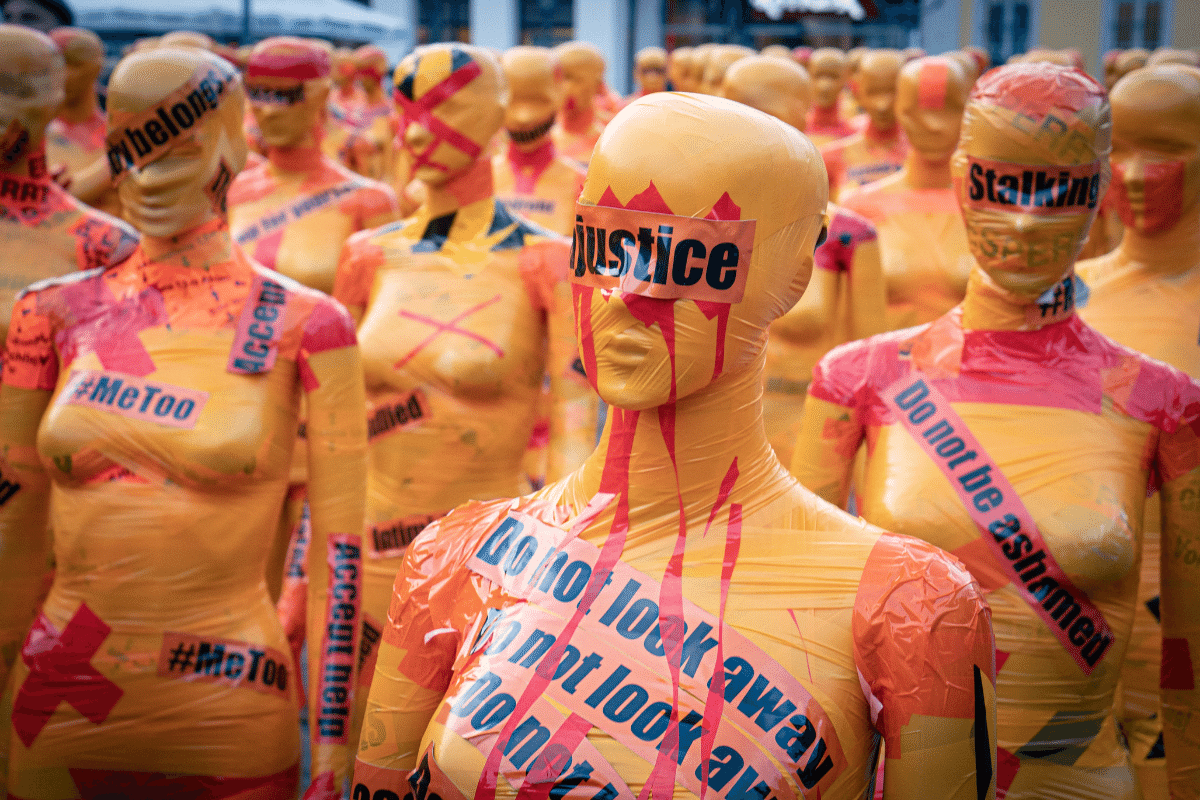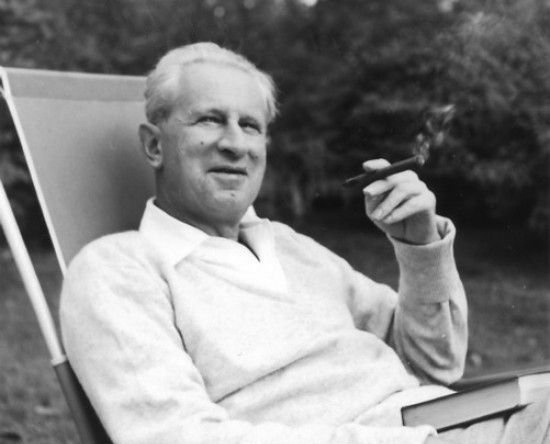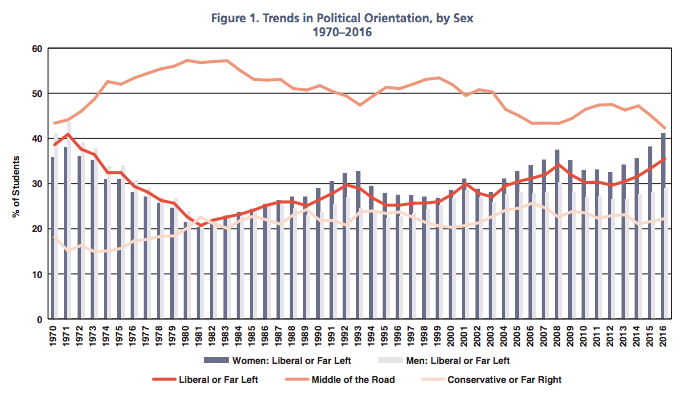Education
Wilfrid Laurier and the Creep of Critical Theory
To understand what happened at Wilfrid Laurier we need to understand what’s causing the gradual advance of leftwing ideology as a cultural phenomenon.

The social justice movement is known for routinely staging demonstrations, shouting down (and shutting down) speakers, and issuing demands. More significantly, however, its ideas and terminology have become part of the fabric of university culture. As psychologist Jonathan Haidt said in an interview earlier this year:
This is all so new. There’s been, I believe, a kind of a moral revolution, a new moral culture emerging on campus but it really is only in the last two years. If any of your viewers graduated from college in 2013, they probably haven’t seen it. … [I]t’s organized around victims of oppression, it’s a vertical metaphor of privileged and oppressor people, and victims. This idea that everything is power.
To make way for this moral revolution, values that historically have defined secular universities are increasingly being swept aside. The most recent example is perhaps the most chilling.
Lindsay Shepherd, a young teaching assistant at Wilfrid Laurier University in Ontario, Canada, was reprimanded for screening a five-minute clip from a televised debate on public education channel TVOntario between professors Jordan B. Peterson and Nicholas Matte over the use of gendered pronouns. Shepherd was teaching a communications class and showed the clip to students as part of a discussion on the use of the singular ‘they’.
Shepherd recorded the meeting where she was reprimanded, thus providing outsiders insight into what universities are increasingly becoming. And, as Haidt mentioned, for anyone who graduated more than a few years ago this is new territory.
The recording reveals that while Shepherd is upset by the accusations, she clearly feels she’s done nothing wrong. It’s evident that there’s a fundamental disagreement between her and her three superiors over the role of a university lecturer. This becomes obvious as Shepherd goes to great lengths to assure them that she didn’t take sides for or against Peterson or Matte and presented the debate neutrally. In fact, it eventually emerges that she disagrees with Peterson. It’s quite evident that she takes pride in the fact that she was able to set aside her personal feelings and present the discussion neutrally. That, to her, is a university lecturer’s duty.
Yet, to her superiors her neutrality is the problem. Had she articulated a clear condemnation of Peterson’s views before presenting them, it would have been acceptable, but by presenting them neutrally she is ‘legitimising this as a valid perspective’. In case there was any doubt, they later expand on the severity of her neutrality:
[T]his is basically like playing – not to do the thing where everything is compared to Hitler – but this is like neutrally playing a speech by Hitler, or Milo Yiannopoulos from Gamergate. This is the kind of thing, that, departmentally, in terms of critical communications studies, and in terms of the course, of what we’re trying to do, is diametrically opposed to everything we’ve been talking about in the lectures.
(There are some important points here, that I’ll get to later, but notice the distinction drawn between the course – critical communications studies – and neutrality: they are diametrically opposed. This is not a slip of the tongue, despite the meaning most people attach to the term ‘critical’.)

It’s easy to see why Shepherd would think that her duty is to neutrality. As Associate Professor David Haskell, one of the few faculty members at Wilfrid Laurier that immediately voiced support for Shepherd, has pointed out, the motto on the crest of Wilfrid Laurier University is Veritas Omnia Vincit: Truth Conquers All. And even a few years ago, when Shepherd herself was entering university, the ideal of a university lecturer as someone who is neutral and facilitates open discourse was largely unquestioned. But Shepherd made the mistake of taking the university’s motto at face value. These days, a university lecturer must read between the lines and hope to avoid inquisition.
***
How did things change so quickly? According to Haidt, it’s the result of many causes that intersected in 2015:
- University faculty have become increasingly left-leaning over the past few decades. This has led to more emphasis on teaching ideas related to power, privilege, and oppression–especially in the humanities–as well as an increased focus on the negative effects of bullying and the psychological theory of ‘microaggressions.’
- A victimhood culture has been developing, teaching students to represent themselves as victims or defenders of victims and to expect school authorities to intervene on their behalf.
- A change in parenting during the 1980s and 1990s has made today’s youth less independent.
- Social media has created an environment of increased tribalism and virtue signalling among students.
Haidt’s analysis makes sense. But, although the shift in parenting and the invention of social media are surely important, they seem to be enhancing an ideological shift, not creating it. Victimhood culture is most advanced at the most left-leaning universities. To that observation, add the increased emphasis on teaching the ideas Haidt mentions, and the likelihood that students at left-leaning universities will come from disproportionately leftwing environments, and we have an intersection of ideologies working somewhat independently on faculty, administrators, and students themselves.
Consider, for example, the habit of no-platforming and shouting down opposing speakers. This may partly be a result of increased sensitivity among students, illustrated by their demand for trigger warnings and safe spaces. But there’s also clearly an ideological component involved – the censorious methods and verbiage used by the social justice movement are strongly reminiscent of elements in German philosopher Herbert Marcuse’s influential 1965 essay Repressive Tolerance.

In this essay, Marcuse argued against the prevailing belief, attributed to British philosopher John Stuart Mill, that a democratic society should allow virtually unrestricted speech and assembly so the best arguments might prevail. Instead, Marcuse suggested that only leftwing movements should be permitted these things, while rightwing movements should not. The former, he argued, are intent on freeing people from oppression, while the latter are intent on keeping them oppressed. Therefore, suppressing the Right is justified in pursuit of ultimate liberation.
Amongst several examples, Marcuse pointed to the Nazis’ ascent to power in the 1930s as a demonstration of the dangers of unlimited tolerance. He suggested that WWII and Auschwitz could have been avoided had democratic tolerance toward the Nazis been withdrawn before it was too late. He also argued that, with the development of mass communication, human society is in a continuous state of emergency due to the shortened distance between word and mass action. For Marcuse, these arguments justified the restriction of free speech and free assembly, which are typically regarded as near-absolute in liberal societies and in liberal theory.
Finally, Marcuse also suggested that violence, while not ideal, might be necessary to resist the oppressive nature of the Right, and that there is a substantial difference between violence from the Left and violence from the Right, since the first supports liberation, while the latter supports oppression.
The inferences one might draw from this – that everyone on the Right is a potential Nazi, and that violence may be an unfortunate but necessary tool in achieving liberation – help explain why many in the social justice movement refer broadly to people on the Right as Nazis, defend the practice of ‘punching Nazis,’ and insist on preventing conservative speakers from speaking and conservative groups from assembling.
And it isn’t just far-left groups like Antifa, as Shepherd’s meeting demonstrated. In fact, this is not the first time Peterson, who identifies as a ‘British classical liberal’ and has spent decades researching the horrors of Nazi Germany, has been labelled a Nazi. These posters were recently put up around Peterson’s neighbourhood:
The inspiration the social justice movement has drawn from Marcuse and similar ideological figures suggests that there’s a deep ideological commitment that goes beyond students’ sensitivity to uncomfortable speech, and that is closely linked to how they understand oppression and liberation.
In fact, a survey of incoming American university students last year showed that the percentage leaning left was at its highest since the early 1970s, and that it had been climbing steadily for a few years before the social justice movement emerged in 2015. The shift is modest, but it does lend support to the idea that there’s an ideological component to the social justice movement that is coming, at least in part, from outside universities.

Perhaps the most interesting thing about the survey is the extent to which political attitudes are increasingly aligning with gender, at least among incoming students. During the early 1970s, men were more likely than women to lean left; that has reversed significantly.
To understand what happened at Wilfrid Laurier we need to understand what’s causing the gradual advance of leftwing ideology as a cultural phenomenon, especially the type that explicitly focuses on oppression, privilege, and power. The social justice movement appears to be just the tip of the cultural iceberg.
***
Marcuse’s rejection of Mill’s ideas on free speech and assembly can be understood within a broader methodology known as Critical Theory that he and several other social scientists developed during the preceding decades. Critical Theory’s defining feature is that it articulates an explicit purpose for itself: to liberate people from oppression.
The Critical Theorists were heavily inspired by Karl Marx, and one of Marx’s most famous statements articulated the distinction that would come to separate Critical Theory from traditional science and philosophy: “Philosophers have hitherto only interpreted the world in various ways; the point is to change it.”
What’s left unstated here is that the purpose is not to change the world arbitrarily, but according to the particular goal of liberating people from oppression. Science thus becomes a tool for achieving a predefined societal state. This reflects a significant departure from traditional scientific methodology, which discourages defining purposes. One might say that the purpose of traditional scientific methodology is to ‘discover truth,’ but even that is unnecessarily restrictive. Science has traditionally worked pragmatically, through a bottom-up process.
In fact, escaping the need to fit science to a predefined purpose was arguably one of the main drivers of the scientific revolution. For centuries before that, philosophy, the precursor to science, was employed largely in the service of justifying religious accounts. (Thomas Aquinas famously referred to philosophy as the “handmaiden of theology.”) Critical Theory can in that sense be considered a return to a (quasi-)religious approach, where the purpose of scientific inquiry is defined a priori.
And, of course, the use of the term ‘critical’ is misleading. The idea is to criticise power structures within the context of liberating people from their oppression. The purpose itself is above criticism, which is why situations like Shepherd’s arise.

It’s obvious why this would lead Marcuse to reject Mill’s ideas regarding free speech and assembly. Mill’s model of society follows his view of science as bottom-up: people express their sentiments, debate them, and negotiate compromises. There’s no predefined model of society, it emerges out of the discourse. You can’t ban certain people from speaking, because you can’t know beforehand whether or not they have something of value to say. At the very least, people must be allowed to express their sentiments, which is information in itself.
Marcuse’s model of society, of course, follows his view of science, and his view is top-down. For him, the desired end-state of society is defined in advance, so there is little need to listen to what people have to say; he can evaluate every person or movement on whether or not they are perceived to be working towards or away from his end-goal (which correlates strongly with Left and Right, respectively), and promote or censor them accordingly.
So, although Critical Theory was conceived as a scientific methodology, in practice it represents an approach to discourse in general. It’s not just about scientific inquiry having a predefined purpose of fighting oppression, but any discourse.
It is this shift – from the multidimensional, bottom-up approach to discourse that characterised classical liberals like Mill, to the singular, top-down approach to discourse that characterises Critical Theory – that has gradually but significantly changed Western culture. It explains why we are now seeing the social justice movement erupt at universities. And this is true even though, ironically, Critical Theory proper is still a niche scientific methodology. In short, the idea that there is a singular purpose to human discourse – fighting oppression (or more neutrally: reducing power differentials) – to which all discourse must be subordinate, has gradually taken over institution after institution.
Consider, for example, a recent blog post by a science fiction author reflecting on the current state of science fiction and fantasy awards. Here he quotes an awards jury member:
What you like, and what is important are not the same things. What feels modern and what is progressive are not the same things. Groundbreaking art does not give us comfort; it feels uncomfortable until we get comfortable enough with it to adjust our mental schema–our worldview– to accommodate it. Good novels don’t conform to us, they change us and change with us, and when they do, they should win awards.
The author’s point is that you don’t win awards these days by writing pure entertainment, no matter how good it may be. You win awards by criticising power structures. In fact, as he argues in another post, it’s increasingly difficult to even get published unless you do this. Yet, even as traditional publishing sales are dwindling, the industry is doubling down on its approach.
This is a good illustration of Critical Theory creep. Not that long ago, it was widely accepted that the main purpose of fiction was entertainment. People bought books they liked, which told publishers what to make more of. This has changed, as the ideas of Critical Theory have made their way into fiction publishing: entertainment, like all discourse, must subordinate all other considerations to the higher purpose of fighting oppression. Essentially, entertainment has become the vehicle through which societal change can be affected, rather than an end in itself.
The same is occurring throughout the entertainment industry, whether it be Hollywood films or mainstream television.
Consider, for example, GQ magazine’s recent naming of NFL Quarterback Colin Kaepernick as its Citizen of the Year. GQ is a men’s style and lifestyle magazine, but neither of those things has anything to do with Kaepernick’s award; he was chosen because he has been the most outspoken player in the ongoing national anthem protests at NFL games. As in fiction publishing, entertainment has been subordinated to the higher political purpose of fighting oppression.
A similar change can be observed in the news media. Not long ago it was generally accepted that news reporting was a purpose in itself. Yet, as the ideas of Critical Theory have gradually crept into the media, news reporting has become less about objective reporting and more about painting oppression narratives. It’s increasingly no longer sufficient to simply report the news, it must be framed in a way that serves the higher purpose of fighting oppression.
Similarly, it was fairly uncontroversial until quite recently to hold that education, especially grade-school education, was a purpose in itself. But that too has increasingly become a vehicle for fighting oppression. Like entertainment and news reporting, education is increasingly subordinating all other goals to that higher purpose.
And, of course, the meeting between Shepherd and her superiors represents as well as anything the distinction between Mill and Marcuse, between critical thinking and Critical Theory. While it is laudable that the University’s president has now apologised officially to Shepherd, her own interpretation is that the apology may have not been achievable had she not secretly recorded the meeting, and stood her ground.
The significance of this cultural shift can hardly be underestimated. We’re moving away from the multidimensional, bottom-up approach to discourse that has characterised and helped shape Western societies, and towards a singular, top-down approach that more resembles how Western societies looked before the Enlightenment. In the light of this shift, the quasi-religious behaviour evident throughout the social justice movement should hardly be a surprise.






